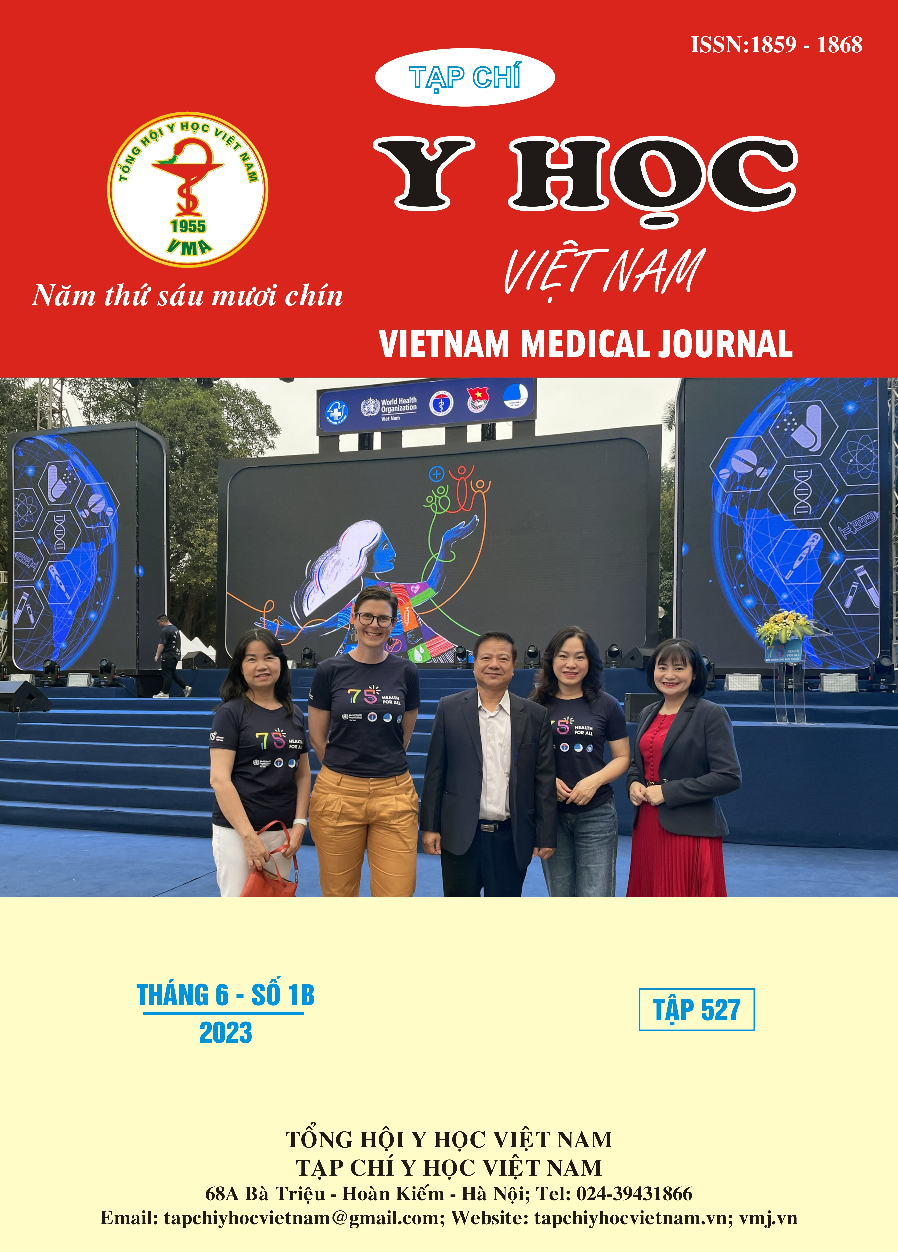THE HELICOBACTER PYLORI CAG PATHOGENICITY ISLAND IN GASTRIC CANCER IN VIETNAM
Main Article Content
Abstract
Background: Helicobacter pylori (H. pylori) infection is associated with some gastric diseases. cag-PAI gene is classified as one of the important virulence factors of H. pylori. Studies show that the frequency of cag-PAI accounts for 60-70% of all Western H. pylori strains and 100% for East Asian H. pylori strains. In Vietnam, the cag-PAI gene has not been studied much. Airm: Study on the role of cag-PAI in gastric pathology and the association of cag-PAI with gastric cancer in Vietnam. Subjects and methods: A cross-sectional study of 623 patients with H. pylori infection, including: Gastric cancer (n = 154), gastric ulcer (n = 129), duodenal ulcer (n = 161) and chronic gastritis (n = 179). Diagnosis of gastric cancer and chronic gastritiss based on histopathology. Cag-PAI status was determined by Realtime-PCR technique. Results: The rate of cag-PAI (+) in gastric cancer (100%), significantly higher than cag-PAI (+) in patients with gastric ulcer (89.9%), duodenal ulcer (90%), chronic gastritis (78.2%). The rate of intact cag-PAI was significantly increased (p<0.05) in patients with gastric cancer (90.3%), gastric ulcer (88.4%), duodenal ulcer (87.6). %) compared with intact cag-PAI in chronic gastritis (76.5%). The percentage of intact cag-PAI was significantly increased (p < 0.05) in type III gastric cancer compared with intact cag-PAI in type I-II gastric cancer. The percentage of intact cag-PAI gene in patients with diffuse-mixed gastric cancer was significantly higher (p < 0.05) than intact cag-PAI in intestinal gastric cancer. Conclusion: The rate of intact cag-PAI is high in gastric cancer patients, closely related to endoscopic morphology and histopathology in gastric cancer patients in Vietnam.,.
Article Details
Keywords
Helicobacter pylori, cag pathogenicity island, gastric cancer, chronic gastritis
References
2. Maeda S, Yoshida H, Ikenoue T, et al. Structure of cag pathogenicity island in Japanese Helicobacter pylori isolates. Gut 1999;44: 336-341
3. Nguyen LT, Uchida T, Murakami K, et al. Helicobacter pylori virulence and the diversity of gastric cancer in Asia. Journal of Medical Microbiology 2008;57: 1445-1453
4. Cover TL. Helicobacter pylori diversity and gastric cancer risk. Minireview 2016;7(1): e01869-15
5. Liévano FC, Gama ET, Hernández MMB, et al. Cag-PAI pathogenicity island of Helicobacter pylori and its association to preneoplastic lesions and gastric cancer. Revista U.D.C.A Actualidad & Divulgación Científica 2018;21(2): 309-318
6. Ikenoue T, Maeda S, Ogura K, et al. Determination of Helicobacter pylori virulence by simple gene analysis of the cag Pathogenicity Island. Clinical and Diagnostic Laboratory Immunology 2001;8(1): 181-186
7. Hsu PI, Il-ran Hwang, Cittelly D, Yamaoka Y, et al. Clinical presentation in relation to diversity within the Helicobacter pylori cag Pathogenicity Island. The American Journal of Gastroenterology 2002;97(9): 2231-2238
8. Ali M, Khan AA, Tiwari SK, et al. Association between cag-pathogenicity island in Helicobacter pylori isolates from peptic ulcer, gastric carcinoma, and nonulcer dyspepsia subjects with histological changes. World J Gastroenterol 2005;11(43): 6815-6822


